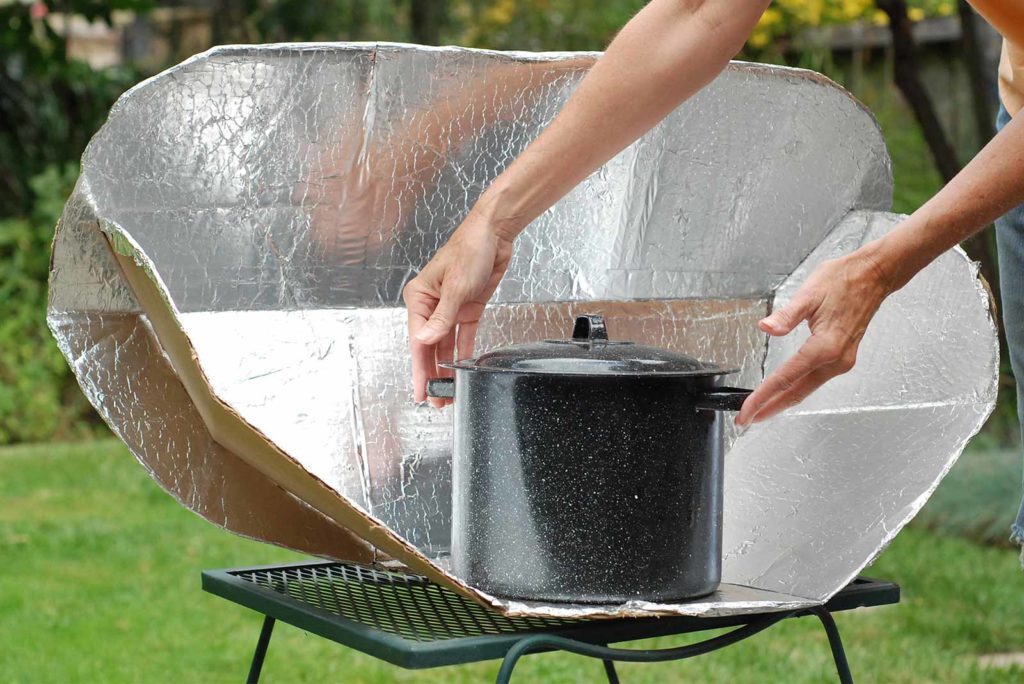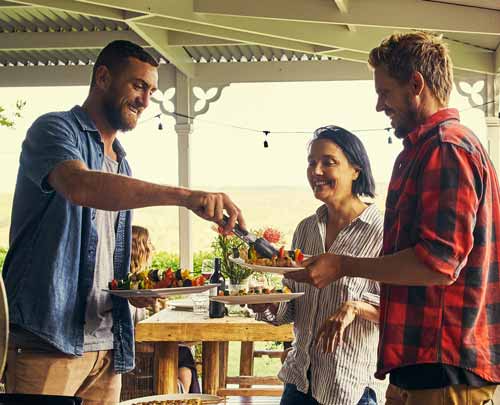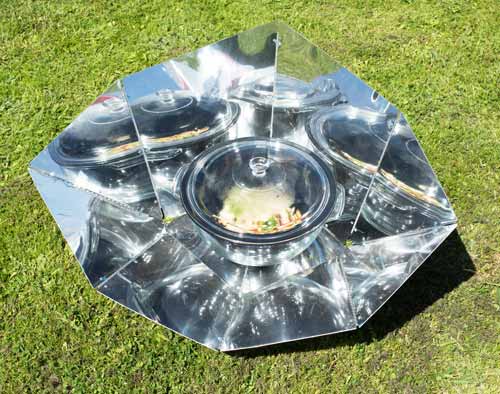
The sun provides so many things for us, from light to heat, and solar electricity. But did you know that the sun can also help cook your dinner? If you’re planning a camping trip this summer, or simply want to try a family fun challenge in your backyard, solar cookers can harness the sun’s energy, accumulating enough of its energy to heat food or boil water.
Whether you purchase a solar oven or try to create one yourself, summer is a great time to put the sun’s rays to work and enjoy a meal prepared in an environmentally friendly way. Believe it or not, there are even cookbooks that provide solar cooking recipes!
Intrigued? If you think you want to try it out, here are some reasons why you should.
 Why Solar Cooking?
Why Solar Cooking?
Cost might be the most immediately appealing reason to give solar cooking a shot. The sun’s power is free! Foregoing kitchen appliances on a regular basis can mean saving on utility costs. And on a particularly hot summer day, you might be less eager to turn on the oven and make your air conditioning unit work harder.
Then there are health benefits. Cooking meats, including poultry and fish, using high-heat methods (above 300 ºF) such as frying or grilling can generate cancer-promoting compounds, called carcinogens. Most solar cooking techniques and devices—excluding intentionally very hot parabolic mirrors, which we discuss below—do not roast food at these elevated degrees.
Extending potential health impact to the environment, solar cookers do not generate indoor or outdoor air pollution. The smoke released from conventional cooking techniques contains particulate matter, such as soot, that can end up lodged in lungs, as well as harmful gases including nitrogen oxides.
A third benefit of solar cooking is convenience. While it may require patience, you don’t have to pay constant attention to the food as it cooks, and cleanup is easy.
Finally, solar cooking is fun! It is a great way to connect with your family in understanding the environmental benefits of solar power, and trying new recipes or designs for a solar oven. What materials work best? Which foods? How is flavor impacted? As you explore, the activity brings everyone together in doing something different this summer.
What Are the Downsides of Solar Cooking?
While solar cooking does offer many pros, there are of course, some cons. The most obvious drawback to solar cooking? It’s not always an available option. If the sun isn’t out and strong, it’s not a good time to try solar cooking. The weather has to cooperate because low-temperature solar cooking is time-consuming, usually requiring several sunny hours at a stretch.
If you live in a higher latitude region, for instance in the northern United States, or are thinking of trying a solar cooker recipe during the winter months, you might also be challenged. This is because the sun does not climb high enough in the sky to where its rays can pass through the thinnest part of the atmosphere in order to deliver sufficient energy to cook food in a reasonable amount of time.
Judging when food, especially meat, has been thoroughly cooked, or at the very least attained a sufficient internal temperature to kill off potentially harmful microbes, can also be tough. Be sure to have the right thermometers available to ensure your food safety.
 Solar Tools of the Trade
Solar Tools of the Trade
As we learned from Cooking with Sunshine, solar cookers usually involve a pot or closed vessel to hold the food and come in three basic varieties that heat the container in different ways.
The simplest, entry-level solar cooker is called a panel cooker. It consists simply of a flat, reflective panel—a piece of cardboard covered in aluminum foil will do—that is positioned to direct sunlight onto a black cooking pot. To hasten cooking, the pot is enclosed in a transparent insulating shell, which can be a high-temperature plastic bag or an inverted, clear bowel.
The most common kind of solar cooker is called a box cooker. As its name implies, it is an insulated box, made from materials such as plastic, wood, or metal. The cooking vessels sit inside, with a reflecting lid propped up to direct additional sunlight into the box’s toasty interior.
The third kind of solar cooker, mentioned earlier, is a parabolic mirror cooker. Curved mirrors focus sunlight on a particular point where the cooking vessel is placed. Unlike the other solar cookers, whose temperatures do not exceed 300 ºF and take a while to heat up, the parabolic mirrored can quickly reach much higher temperatures, making them more akin to a conventional oven. These are not recommended for novices.
Solar Cuisine
Wondering where you should start in your fridge or pantry? Start with basics like eggs, rice, even cornbread.
Visit the below sites for more inspiration.









